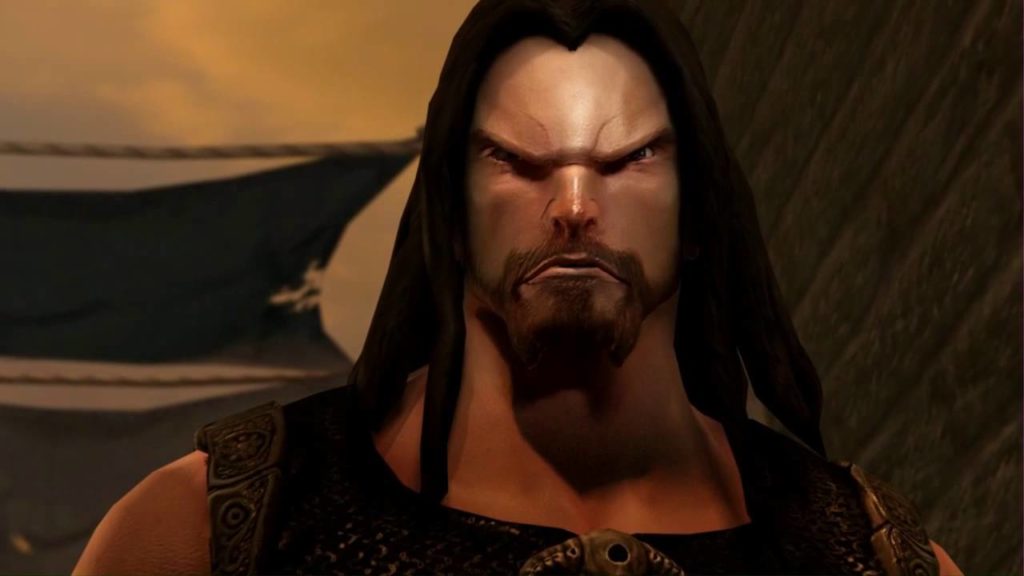There’s a problem with Garshasp: The Monster Slayer. To be fair, there are several problems, but the fundamental one is this – I want to like it. And you will too.
Dead Mage Inc. have released, at best, an average game. At best. But you have to give credit to this independent developer, who took a half finished idea from Fanafzar Game Studios in Iran (now defunct) and not only finished, but distributed a playable, semi-enjoyable title. Games are meant to be about the experience, and the “underdog” tag does actually affect how you’ll feel playing Garshasp.
In truth, a lot of the joy you’ll get from this game is in seeing what an independent studio, without the budget of the big companies, can accomplish. Unfortunately, in trying to make that same point, Garshasp: The Monster Slayer ends up coming across as a pale imitation of other titles, with a plethora of small problems that frustrate beyond the goodwill its humble beginnings generate.
The story takes its cues from Persian (particularly Iranian) mythology, but for some reason, the lead character design and narrative will make you instantly think “Conan”. In fact, any fan of the Arnie classic will be struck by how the opening is reminiscent of Mako’s narration. Except this narrator sounds Native American. Which is weird for a game set in Persia.
Essentially, Garshasp is chilling one day, when his village is attacked by Hitasp and his Deevs (demons). This leads him to defend it. Unfortunately his brother is slain, the magical mace is stolen, and vengeance is vowed. A simple tale that should only take a couple of hours depending on how lucky you are. I say lucky because camera angles and controls sometimes decide to challenge each other to a stand-off, the result being your untimely death. You may think you’re about to jump forward, when the camera angle swerves and suddenly you’ve graduated to attempted flight.
Dead Mage Inc. have made some beautiful backgrounds and really want you to notice, so there will be cinematic sweeps every now and then to make sure you can see all the hard work they’ve done. It’s similar to the way that Fable approaches new environments. It’s even more similar to the way God of War does, well, everything. You’ll also be treated to random angle changes when running to highlight a new area. This would be fine if it didn’t feel as though Garshasp‘s camera dictated your movement rather than the other way round.
Garshasp doesn’t just run, jump, and slash. He can roll, albeit with limited effect due to the camera issues above. He can climb ladders and walls. He can slide down walls with his blades (the monumental length of this borders on hilarious). Garshasp also has the mystical Persian ability to double jump – which makes sense since he is in fact the son of King Zahhak. Yes, the Conan-bodied, Kratos-scowling, Buster Sword-wielding, Devil killer is also a Prince of Perisan mythology. I smell a movie starring The Rock.

Background music and in game fight audio all enhance, but the narrator’s accent actually pulled me out of the game (seriously, was there no one capable of an Iranian accent at studio HQ in Texas?) and occasionally heavy fighting resulted in audio mis-cues. It’s, again, small details that start to add up.
The fighting is straight out of “Devil-May-God-of-Fable”, right down to the Fable-style “block from anywhere”. However some bosses will require, after being set up, a combination of correct key strikes to ensure a more cinematic kill that many people will recognise from other titles. One boss fight had me against two charging, hulking, brutes that’s so Arkham-Asylum Bane-like, I almost expected Joker to pop out at the end. It’s also possible to perform, ahem, expert kills on opponents with your, ah, wrist blade.
The fighting mechanics, unfortunately, can’t keep up with the style and it’s possible your weapon will just phase through enemies at certain points. More frustrating is when you start a combo, only to be mysteriously blocked by your stunned opponent, especially when you’re sure you hit the right key. This will really come home in later boss fights, making for a jarring rise in difficulty.
You can level-up weapons and gain new attacks through accumulating experience. This is done by satisfyingly slaughtering evil minions and absorbing the orbs they drop, or finding orange experience spheres and interacting with them. Health is also re-charged by collecting blue spheres. Why do you need to collect spheres? Why not just earn the experience with the kill? Why have a random blue orb instead of a simple health potion? Well that’s just how it is. There’s no mention of Garshasp having mystical energy, but it’s worked before…

It all adds up to a first game from an independent studio that is trying hard to make an impression. Everything they’ve thrown in says “look what we can do” – and that’ a sentiment New Zealanders can probably appreciate more than most. For $25, from a studio that shows this much promise, but doesn’t have the budget yet to compete, it’s almost worth it. This is probably a game for fans of gaming and the industry – as opposed to casual gamers (who can get a better game for a similar price, when taking advantage of sales or “classics”-like value pricing).
So if the origin of this game makes you curious then skip a pizza and make a small donation to an independent developer. If you really don’t care about all that, then at least remember Dead Mage Inc. – it will be interesting to see what they do next.